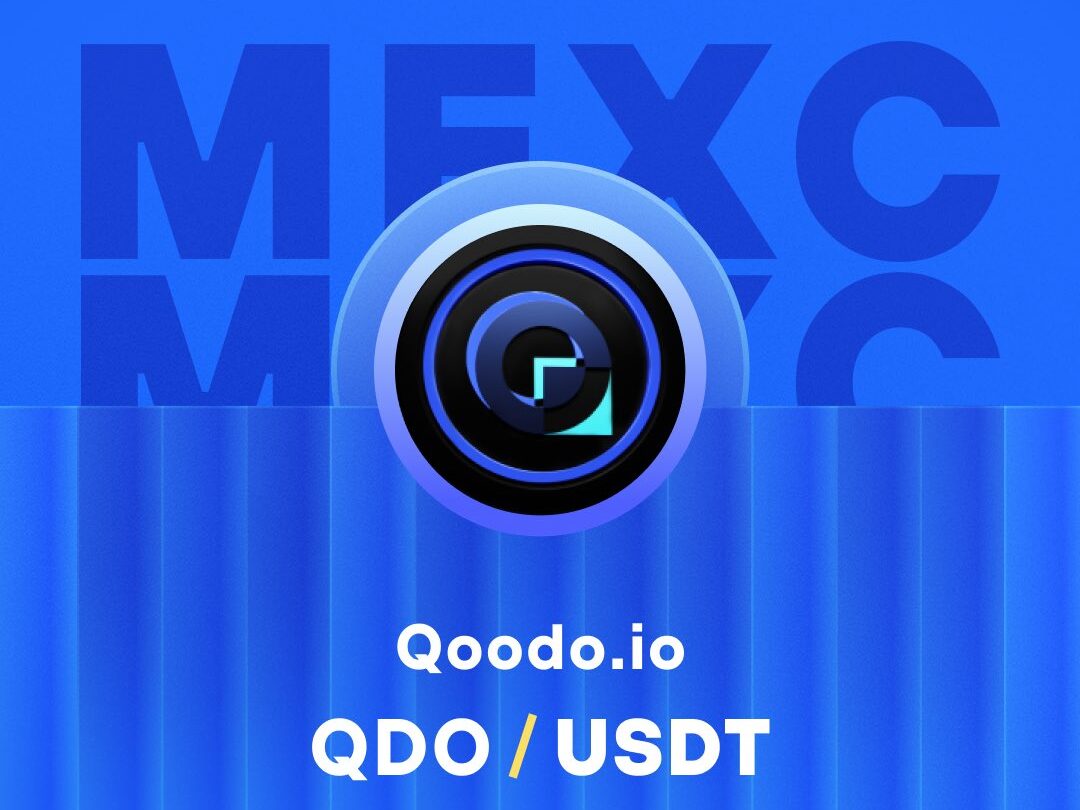
In the rapidly evolving Web3 landscape, developers face a critical dilemma: choose between centralized cloud infrastructure for performance or sacrifice speed for decentralization. Fleek Network emerges as the solution that eliminates this compromise.
This comprehensive guide explores how Fleek Network is revolutionizing edge computing through blockchain technology, creating a decentralized alternative to traditional cloud providers like AWS and Cloudflare. Readers will discover the innovative FLK token economics, understand the platform’s unique technical architecture, and learn why Fleek Network’s innovative approach positions it as a significant development in Web3 infrastructure.
Key Takeaways
- Fleek Network is a decentralized edge computing platform that solves the Web3 infrastructure dilemma, enabling high-performance applications without sacrificing decentralization principles.
- FLK Token serves as the native ERC-20 utility token powering the ecosystem through staking requirements for node operators and governance participation for token holders.
- Revolutionary Technology combines Narwhal & Bullshark consensus, Blake3 hashing, and VM-less architecture to deliver enterprise-grade performance on decentralized infrastructure.
- Real-World Applications include decentralized CDN services, edge computing functions, Web3 infrastructure services, and enterprise blockchain integration solutions.
- Sustainable Economics features a community-focused tokenomics model with 66% allocated to community rewards, algorithmic balancing mechanisms, and stable USD pricing for services.
- Competitive Advantage over traditional cloud providers through censorship resistance, transparent governance, and cost-effective distributed resource allocation while maintaining performance parity.
- Future Potential positions Fleek Network as foundational Web3 infrastructure with plans for dynamic service loading, enterprise adoption, and expansion beyond current blockchain limitations.
Table of Contents
What is Fleek Network and FLK Token?
Fleek Network is an open-source decentralized edge computing platform designed to accelerate the development and execution of Web3 services without compromising on performance or decentralization principles. Built as a proof-of-stake Ethereum side-chain, Fleek Network operates through a distributed network of edge nodes that provide computational resources, bandwidth, and storage to developers worldwide.
The platform addresses the fundamental infrastructure gap in Web3 by enabling applications, protocols, and services to achieve centralized web-like performance while maintaining complete decentralization. Unlike traditional blockchain networks that focus on consensus and transaction processing, Fleek Network specializes in edge computing, content delivery, and data processing at the network’s edge—bringing computation closer to end users for optimal performance.
FLK serves as the native ERC-20 utility token that powers the entire Fleek Network ecosystem. Node operators must stake FLK tokens to participate in the network and earn rewards, while developers and clients pay for services using USD-denominated stablecoins. This dual-token economic model ensures stable pricing for services while providing sustainable incentives for network participants.
Fleek Network vs FLK Token: Key Differences
| Aspect | Fleek Network | FLK Token |
|---|---|---|
| Definition | Decentralized edge computing platform and infrastructure | Native ERC-20 utility token powering the ecosystem |
| Function | Provides edge services, content delivery, and computing resources | Enables staking, governance, and network participation |
| Role | The complete protocol and network infrastructure | Economic mechanism and access credential |
| Usage | Hosts services, processes data, delivers content | Stakes for validation, pays for services, governance voting |
| Comparison | Similar to Ethereum (the platform) | Similar to ETH (the native token) |
| Target Users | Developers, enterprises, Web3 projects | Node operators, investors, service consumers |
What Problems Does Fleek Network Solve?
1. The Web3 Infrastructure Dilemma
Many Web3 projects face an impossible choice: rely on centralized cloud infrastructure like AWS or Cloudflare to achieve acceptable performance, or build entirely on decentralized systems that often sacrifice speed and user experience. This fundamental trade-off has forced even the most decentralization-focused projects to introduce centralized components, creating single points of failure and undermining Web3’s core principles.
2. Performance and Latency Challenges
Traditional blockchain networks excel at consensus and transaction processing but struggle with edge computing requirements. Modern applications demand sub-second response times, global content delivery, and seamless user experiences—capabilities that existing decentralized solutions cannot match. Research shows that page load times increasing from one to three seconds result in a 32% bounce rate increase, making performance critical for adoption.
3. Infrastructure Complexity and Cost
Every Web3 protocol currently must choose between two suboptimal paths: utilizing centralized infrastructure that contradicts decentralization goals, or building complex performance optimizations into their own networks. This forces each project to reinvent networking solutions, geographic routing, and load balancing—creating inefficiencies and duplicated efforts across the ecosystem.
4. Developer Experience Barriers
The complexity of deploying and scaling decentralized applications often requires specialized knowledge of peer-to-peer networking, consensus mechanisms, and distributed systems. This technical barrier prevents many developers from building on Web3 infrastructure, limiting ecosystem growth and innovation.

The Story Behind Fleek Network
Fleek Network was founded by a team of infrastructure and blockchain experts who recognized the critical gap between Web3’s decentralization ideals and the practical performance requirements of modern applications. The project emerged from years of experience building and scaling Web3 infrastructure, where the founders consistently encountered the same fundamental challenge: achieving enterprise-grade performance without sacrificing decentralization principles.
The team’s vision centers on creating a shared infrastructure layer that all Web3 projects can leverage, eliminating the need for each protocol to build its own performance optimizations. This approach mirrors how the modern web evolved—with specialized content delivery networks and edge computing services becoming shared infrastructure that benefits the entire ecosystem.
Development began with extensive research into consensus mechanisms, settling on Narwhal and Bullshark algorithms developed by Mysten Labs for their unique ability to handle high throughput while maintaining decentralization. The team has progressed through multiple testnet phases, continuously refining the protocol based on real-world performance data and community feedback.

Fleek Network Key Features and Technology
1. Advanced Consensus Architecture
Fleek Network utilizes Narwhal and Bullshark consensus mechanisms, providing high-performance mempool management and zero-message overhead consensus. This architecture enables the network to efficiently process Delivery Acknowledgements—cryptographic proofs that nodes have completed work—without bottlenecking the edge computing capabilities that define the platform’s core value proposition.
2. Content Addressable Core with Blake3 Hashing
The platform operates on content addressing principles using Blake3 hashing for efficient content identification and streaming verifiability. This approach ensures that data integrity can be verified at every step, while the Distributed Hash Table (DHT) enables flexible mapping between immutable data pointers and their corresponding content hashes.
3. Geographic Awareness and Smart Routing
Unlike traditional blockchain networks, Fleek Network gains implicit geographic understanding through latency and hop count data collected between nodes. This reputation-based system enables intelligent work allocation, ensuring that user requests are routed to the most appropriate nodes based on both geographic proximity and performance history.
4. VM-Less Architecture for Maximum Efficiency
Fleek Network’s core protocol operates without a virtual machine, allowing services to consume edge node resources directly without unnecessary overhead. This design choice enables more efficient resource utilization and provides developers with greater flexibility in building services, as various VMs can be implemented at the service layer when needed.
5. Built-In Decentralized File System
The platform integrates seamlessly with external decentralized storage protocols including IPFS, Filecoin, and Arweave. This modular approach keeps edge nodes lean while providing comprehensive storage capabilities, enabling developers to choose the most appropriate storage solution for their specific requirements.

Fleek Network Use Cases and Applications
1. Decentralized Content Delivery Network (CDN)
Fleek Network enables the creation of truly decentralized CDN services that cache and deliver content based on geographic demand and popularity. Unlike traditional CDNs controlled by single entities, this approach provides censorship resistance while maintaining competitive performance through intelligent edge caching and reputation-based routing.
2. Edge Computing and Serverless Functions
The platform supports various edge computing applications, from simple JavaScript functions to complex server-side rendering. Developers can deploy Lambda-like services that execute at the network edge, providing low-latency computation for Web3 applications without relying on centralized cloud providers.
3. Web3 Infrastructure Services
Fleek Network facilitates essential Web3 services including decentralized IPFS pinning, blockchain snapshot distribution, and alternative rollup sequencing. These services benefit from the network’s edge architecture, providing faster synchronization times and more reliable data availability for blockchain applications.
4. Enterprise Blockchain Integration
The platform enables enterprises to deploy blockchain solutions with performance guarantees that meet traditional business requirements. By providing infrastructure coverage, scalability, and predictable costs, Fleek Network bridges the gap between enterprise needs and Web3 capabilities.
FLK Tokenomics and Distribution
Based on the available documentation, Fleek Network follows a comprehensive tokenomics model designed for long-term sustainability:
Token Distribution Framework:
- 66%: Community allocation (including staking rewards 20%, ecosystem funds 20%, DAO 10%, Foundation 10%, Protocol-Owned Liquidity 5%, Pre-Mainnet Community 1%)
- 17%: Core contributors (current and future team members)
- 17%: Backers and early node operators
Economic Mechanisms:
- Staking Requirement: All participating nodes must stake FLK tokens to validate and earn rewards
- Stable Pricing: Services priced in USD-denominated stablecoins for predictable costs
- Algorithmic Balancing: NME (Net present value Market price Equilibrium) system manages token rewards based on network usage and market conditions
- Protocol-Owned Liquidity: 5% of supply reserved for market stability operations
Reward Distribution:
- Node operators earn both USD stablecoin fees and FLK token rewards
- Rewards distributed approximately every 24 hours (per epoch)
- Token rewards decrease when network usage increases, maintaining economic balance

FLK Token Functions and Utility
1. Network Security and Validation
FLK tokens serve as the primary security mechanism for Fleek Network through mandatory staking requirements. Node operators must stake tokens to participate in consensus, validate transactions, and earn network rewards. This economic security model aligns incentives between individual node operators and overall network health, with slashing penalties deterring malicious behavior.
2. Service Payment and Resource Access
While end users pay for services in USD-denominated stablecoins for price stability, FLK tokens facilitate the underlying economic mechanisms that enable these transactions. The token bridge between Fleek Network and Ethereum enables seamless entry and exit of value while maintaining the platform’s economic integrity.
3. Governance and Protocol Evolution
FLK token holders participate in governance decisions that shape the platform’s future development. This includes voting on protocol upgrades, economic parameter adjustments, and strategic initiatives that affect the entire ecosystem. The governance model ensures that stakeholders with long-term alignment have proportional influence over network direction.
4. Ecosystem Incentives and Growth
The token serves as the primary mechanism for incentivizing ecosystem growth, rewarding early adopters, service developers, and community contributors. Through algorithmic distribution mechanisms, FLK tokens help bootstrap network effects while ensuring sustainable long-term economics as the platform scales.

Fleek Network Future Roadmap
Fleek Network’s roadmap progresses through carefully planned phases toward mainnet launch, with each stage building essential infrastructure and capabilities. The current development focuses on completing core systems including consensus, blockstore, and service execution frameworks while expanding the testnet to include external developers and node operators.
The platform’s evolution centers on enabling dynamic service loading, allowing developers to deploy edge services in any system-level programming language during runtime. This advancement will transform Fleek Network from a specialized edge computing platform into a general-purpose infrastructure layer capable of supporting diverse Web3 applications and services.
Long-term vision includes expanding beyond Web3 to serve traditional enterprises seeking decentralized infrastructure alternatives. As regulatory frameworks evolve and enterprises increasingly prioritize data sovereignty, Fleek Network’s combination of performance, decentralization, and cost-effectiveness positions it to capture significant market share in the broader cloud computing sector.
The network’s success depends on achieving critical mass of both supply (node operators) and demand (developers and enterprises). The project has progressed through multiple testnet phases as outlined in its development roadmap and strategic partnerships forming across the Web3 ecosystem.

Fleek Network vs Competitors: Advantages Over Traditional Cloud
Traditional Centralized Competitors
Fleek Network competes directly with established cloud providers including Amazon Web Services (AWS), Cloudflare, and Google Cloud Platform. While these platforms excel in performance and reliability, they represent single points of failure and control that contradict Web3 principles. Fleek Network offers comparable performance through its edge architecture while providing censorship resistance, transparency, and community governance that centralized providers cannot match.
Decentralized Infrastructure Alternatives
Within the decentralized space, Fleek Network differentiates itself from storage-focused solutions like Filecoin and Arweave by specializing in edge computing rather than long-term data preservation. Unlike general-purpose blockchain platforms that attempt to handle all use cases, Fleek Network’s specialized architecture delivers superior performance for edge computing applications while maintaining full decentralization.
Competitive Advantages
Fleek Network’s primary advantages include its VM-less architecture for maximum efficiency, sophisticated geographic awareness for intelligent routing, and content addressable core for verifiable data integrity. The platform’s economic model provides stable pricing for developers while ensuring sustainable rewards for node operators—addressing key pain points that limit adoption of other decentralized infrastructure solutions.
Performance and Cost Parity
The platform’s architecture is designed to achieve performance metrics that can compete with centralized providers while offering cost advantages through its distributed economic model. The platform’s ability to leverage geographic distribution and competitive resource pricing creates natural cost efficiencies that benefit end users without compromising service quality.
Conclusion
Fleek Network represents a fundamental breakthrough in Web3 infrastructure by solving the long-standing trade-off between decentralization and performance. Through its innovative edge computing architecture, sophisticated consensus mechanisms, and sustainable tokenomics, the platform enables developers to build truly decentralized applications without sacrificing user experience or operational efficiency.
The FLK token serves as more than just a utility token—it’s the economic foundation that aligns incentives across a global network of contributors, creating a self-sustaining ecosystem that grows stronger with increased adoption. As Web3 continues its evolution toward mainstream acceptance, Fleek Network’s infrastructure-first approach positions it as essential foundation technology that will enable the next generation of decentralized applications.
For developers, enterprises, and investors seeking exposure to Web3’s infrastructure layer, Fleek Network offers a compelling combination of technical innovation, economic sustainability, and strategic positioning in the rapidly expanding decentralized computing market.
Join MEXC and Get up to $10,000 Bonus!
Sign Up


